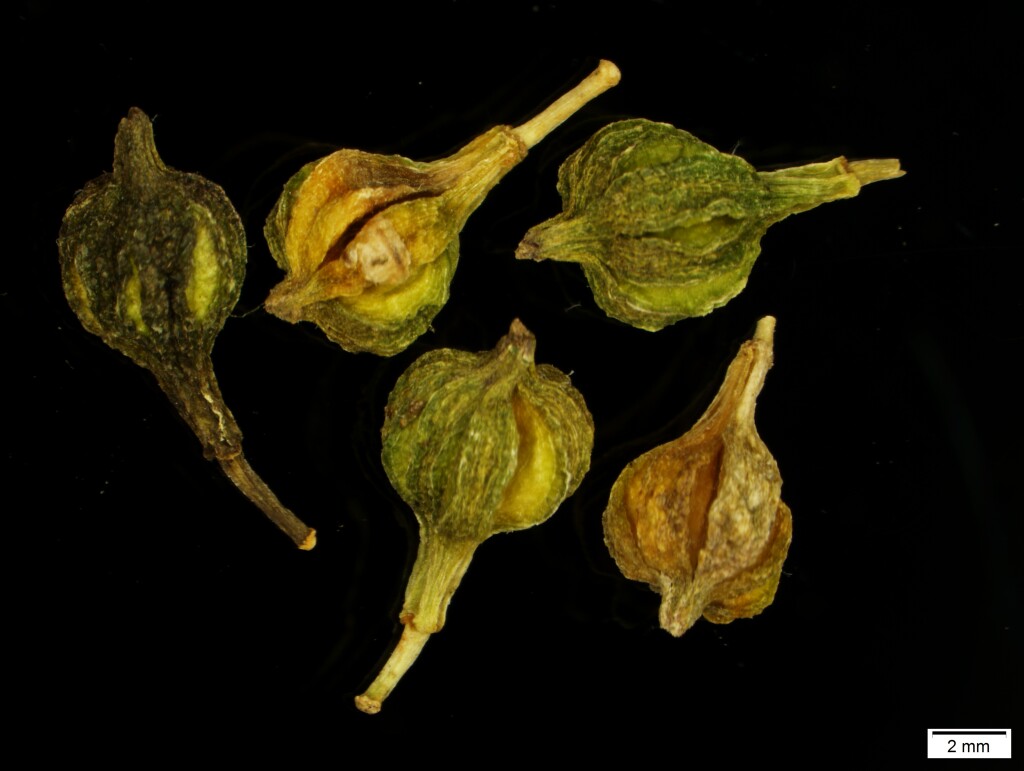Cycnogeton microtuberosum
(Aston) Mering & KadereitSimilar to Cycnogeton procerum but tubers smaller, globular-obloid, 4–13(–17)mm long, 3–6 mm diam., numerous, terminating very short roots 1–7(–14) mm long and hence clustered closely against the rhizome; leaves usually erect, more thickly spongy basally, ± semicylindric in cross-section c. 3 cm below the sheath summit with the width of the spongy portion only 1.6–2.4 times its thickness and with the sheaths gently incurved, usually touching to overlapping; scape at fruiting c. 47–103 cm long, 2.5–12.6 mm diam.; infructescence 7–21 cm long, 15–24 mm diam.; fruits c. 44–137 per infructescence, touching, very distinctive, very broadly obovoid with the base contracted and stalk-like and with a squat summit, 7–9.6 mm long, 5.5–8.2 mm diam.; carpels 6 (occasionally 5), normally all maturing; mature carpels ventrally attached along 58–70% of the carpel length, never twisted, each more or less triangular in cross-section with the dorsal surface flat or shallowly indented, rarely shallowly convex, ridges absent. Fruits (Aug.–)Nov.–Apr.(–May).
GipP, EGL, EGU. Also Qld, NSW. Common in fresh, still or slow-flowing water to 50(–120) cm deep, in small creeks, swamps and farm dams. Also in stagnant water that is often highly eutrophic and humic from farmland runoff.
The more or less distinctive, cylindric shape of the lower leaf (below the sheath summit) occurs also in the East Gippsland variant of Cycnogeton procerum.
 Spinning
Spinning

